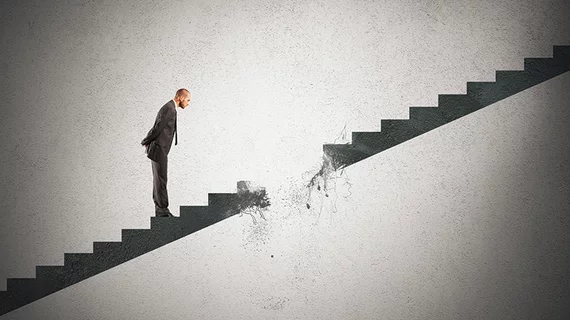Governors across the U.S. are currently contemplating how to resume business as usual when the COVID curve flattens. Radiologists likewise are calculating what it will require to resume routine imaging in a climate that’s vastly different from the one they remember a few months prior.
In a new pre-proof opinion piece, published Wednesday in JACR, Dutch imaging experts shed some light on how they plan to handle this oncoming “crisis after the crisis.” Regular radiologic services will eventually return, however, planning for that uptick is difficult in a time of staffing cuts, dwindling revenue and uncertainty, they noted.
“Therefore, creative solutions with existing resources have to be realized,” Thomas Kwee MD, PhD, with the Department of Radiology at University Medical Center Groningen, the Netherlands, and colleagues wrote April 22. “Advantages of the current COVID-19 crisis for a radiology department, at least ours, are the availability of time to implement solutions and a potentially increased willingness of the entire radiology team to comply.”
Kwee et al. noted that because of the pandemic, the volume at their tertiary care center in Western Europe has decreased by a factor of at least three. They’re expecting a sizeable backlog of studies once the dust settles, and are taking three specific steps to prepare:
1) Shortened scan times: MR represents an ample portion of the center’s imaging caseloads. Such scans are often time consuming, so they plan to replace current MRI protocols with abbreviated versions when possible. Previous studies have found that shortening protocols does not produce inferior results, the authors noted.
2) More generalization: A majority of radiologists at University Medical Center Groningen work in subspecialties. But Kwee and co-authors acknowledged this arrangement does not work, given that “some sections will experience higher peak workloads than others in the aftermath.” Based on which types of imaging procedures have been pushed back, they’ve pinpointed subspecialists who may be susceptible to work overloads and burnout.
“Subsequently, radiologists with other subspecializations have been distributed among these vulnerable sections on a voluntary basis and given the task to refresh their knowledge to be able to independently perform basic or common procedures in these sections,” Kwee wrote.
With added downtime during the pandemic, radiologists have time to “refresh their knowledge,” and perform procedures under the supervision of experts, the authors added.
3) Hands-off with students: Typically, radiology trainees participate in a one-week internship where they can interpret studies under the supervision of an experienced clinician. But given scarce staffing resources, rads, fellows and residents are prepping self-educational materials that students can use “until workload normalizes to a level comparable to that before the COVID-19 outbreak.”
Experts similarly explored how radiology practices can prepare for an incoming “surge” of cancer screenings in Radiology: Imaging Cancer last week. In a corresponding opinion piece, a different set of authors predicted it could be months before imaging volumes normalize.

